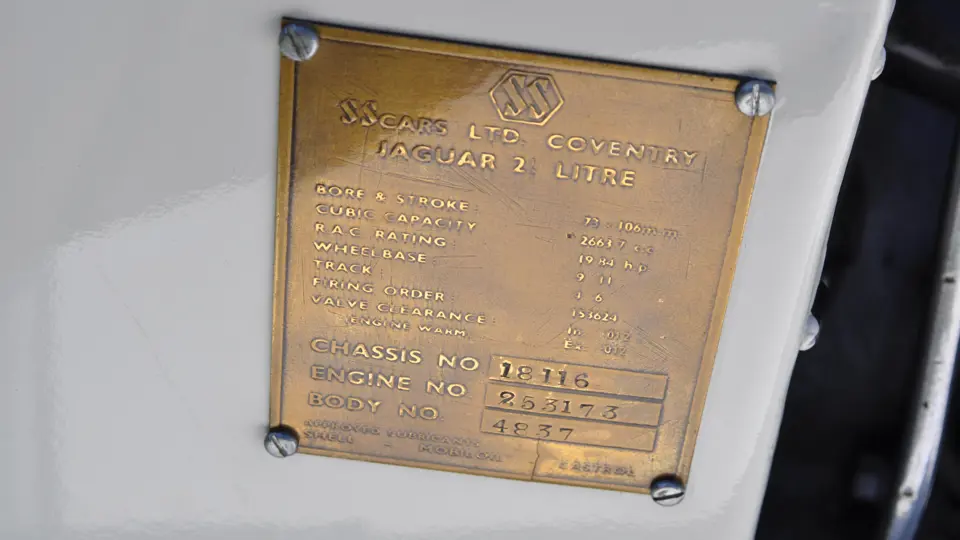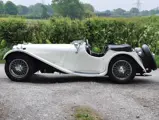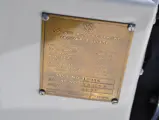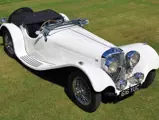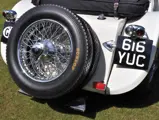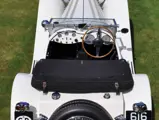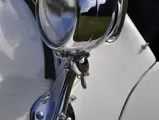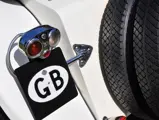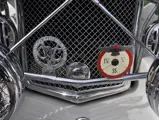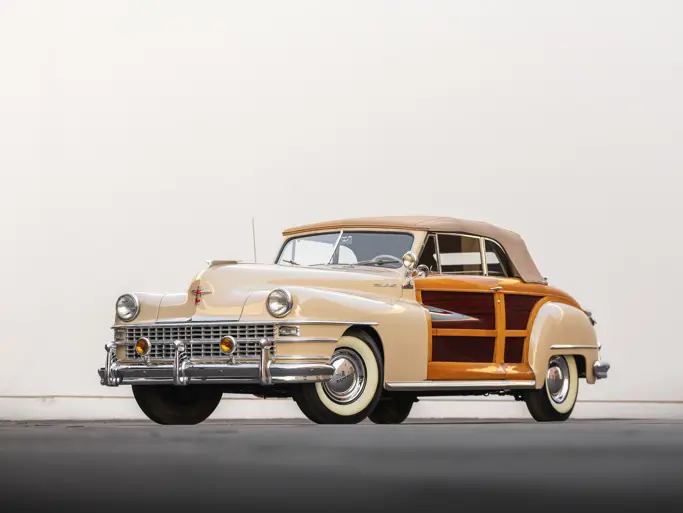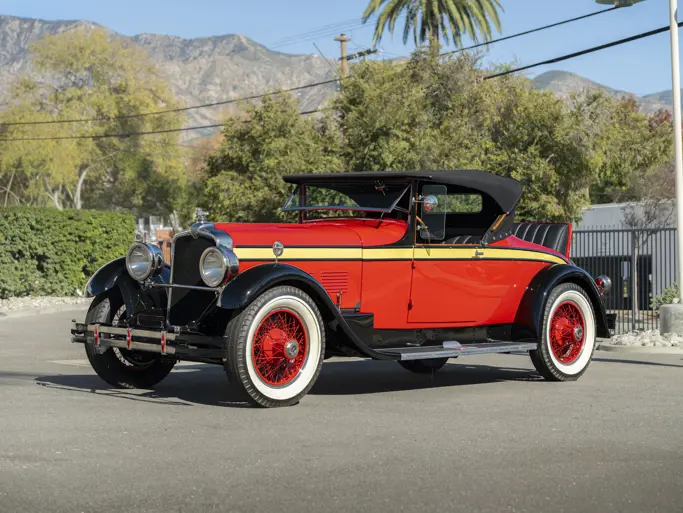2,663 cc overhead valve six-cylinder engine with four-speed manual transmission, beam front axle, live rear axle and four-wheel finned drum brakes. Wheelbase: 98"
- One of only about 190 2½ Litre SS 100s built
- One of the great pre-war British sports cars
- A well-sorted, nicely presented example ideal for tours and rallies
William Lyons loved publicity. In fact, he could even have been described as a shrewd publicist. “Wait! The ‘SS’ is Coming” was one of the first advertisements for his newly formed motor car manufacturing company back in mid-1931. The advertisement continued: “SS is the name of a new car that’s going to thrill the hearts of the motoring public and the trade alike.” And Lyons was right.
At the 1931 London Motor Show, it was his creations that caused a sensation. The SSI and SSII coupés featured a sleek bonnet that extended for what seemed like miles. They were an instant success and were met with rave reviews by the press.
In 1935, Lyons again created a stir first with the debut of his ‘Jaguar’ name and then, not long after, with the introduction of the SS 100 sports two-seater. The car’s light weight meant the 2½-litre engine could propel it up to 100 mph quite rapidly. The company’s marketing literature declared the following: “Designed primarily for competition work, this model is equally suitable for ordinary road use, for despite the virility of its performance it is sufficiently tractable for use as a fast touring car without modification.” Enthusiasts quickly recognised the car’s performance capabilities, driving them successfully in hill climbs, rallies and road races all across England and Europe. The factory did the same and campaigned the SS 100 extensively in 1937 and 1938 at Goodwood, Brooklands, Donington Park and Crystal Palace tracks and in hill climbs, especially Shelsley Wash and La Turbie in France.
In all, only about 190 2½ Litre SS 100s left the Coventry works and 3½ Litre production reached just 118 cars before the Coventry works was changed over to military work, making aircraft components. Considering how few Jaguar SS 100s were built, their influence is remarkable. The basic OTS (open two-seater) remains the quintessential 1930s British sports car. Behind a couple of Lucas P100 headlights, the hood is so long the driver is virtually sitting between the back wheels. The windshield folds down, the doors are cut so low you can tap your pipe out on the ground, and the car rides firmly on 18-inch, knock-off wire wheels.
With a top speed of 101.12 mph and 0-60 time of 10.9 seconds, the SS 100 is less than a second slower to 60 mph than the 1949 XK120 and only two seconds slower in the ¼ mile – a remarkable achievement in the late 1930s!
Chassis no. 18116
This 2½-Litre SS 100 left the factory on the 1st July 1937 and was delivered through Henly’s London to a Mr. Head. The car was subsequently imported into the USA in 1955 by Don Schoenert of North Hollywood and would spend the next 55 years in sunny, dry California. Mr. Schoenert later sold the car to Bud R. Fisher of Burbank. According to the earliest Classic Jaguar Association SS100 Register, published in 1971, the car was owned by Elliot Weiner of Escondido who owned it for the next 40 years and was described as being in restored condition and finished in white, the livery that the car wears today. Mr. Weiner was to own the car for the next 40 years.
Like many SS100s, the car’s engine was replaced at some stage in its life, but the current engine is a correct period-type 2½ litre, SS-stamped unit. Whilst in Mr. Weiner’s ownership, the car was a regular show contender and in 1981 was honoured with a first-place award in the San Diego Concours (a copy of the newsletter is on file). Several show plaques are displayed under the bonnet along with, rather interestingly, a competitor’s plaque from the Stockton Road Races in 1956.
Although restored many years ago, the car has retained a delightful, gently patinated condition. The paintwork, finished in Ivory cellulose, is still very presentable today. All of the chrome-work is in excellent condition and is finished with period accessories such as mesh headlamp guards, two original factory spotlights together with a single screen, pillar-mounted light. At the rear, fishtail exhaust trims complement twin owl’s eye lamps and twin spare wheels. All of the wheels are chrome finished and fitted with classic ‘Dunlop Racing’ tyres. The interior is upholstered in black leather with a slight patina that is in keeping with sparing use. The cockpit sports all correct instruments and an early wood-rim steering wheel.
The car behaves beautifully on the road and feels as fast as many 3½-litre derivatives. Steering is excellent, as is the ride quality, which is virtually rattle-free. Very nicely presented, this SS100 would make an excellent tour and rally car, eligible and most welcome for the most important events such as the Mille Miglia, Colorado Grand and Tour d’España, to name but a few. It comes taxed and tested together with its Jaguar Heritage Certificate.
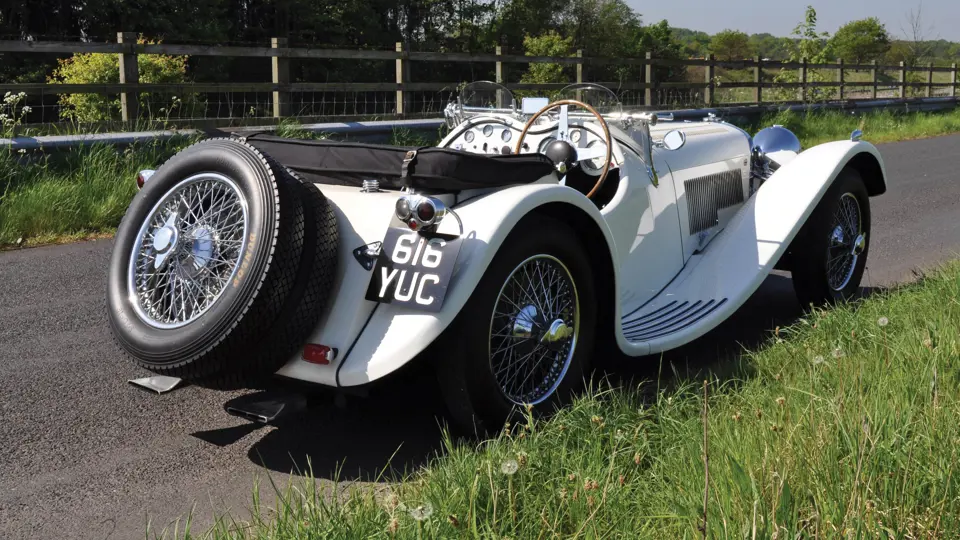
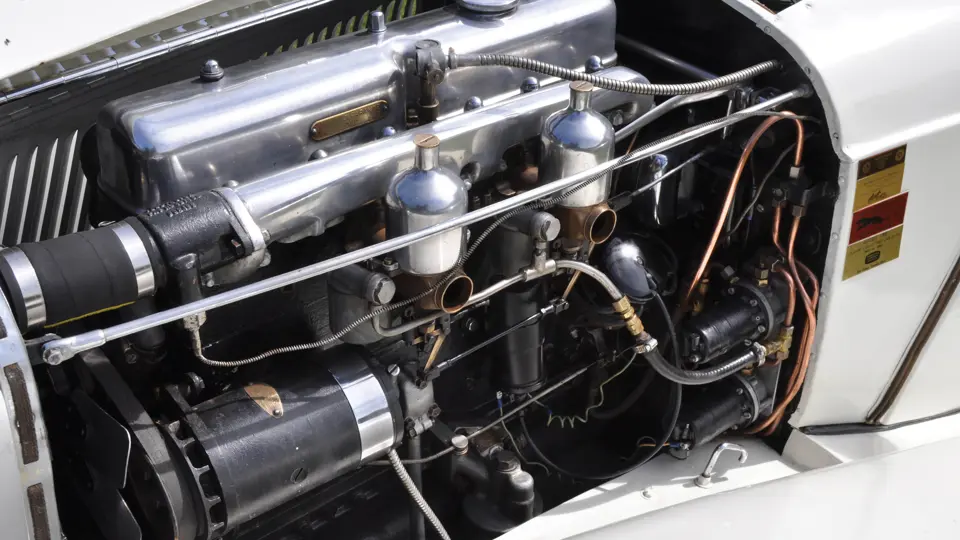
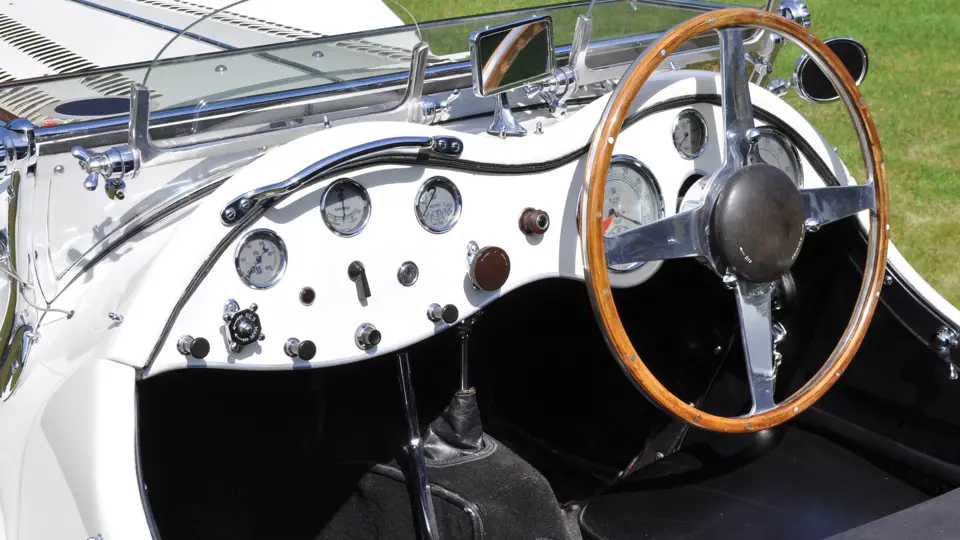

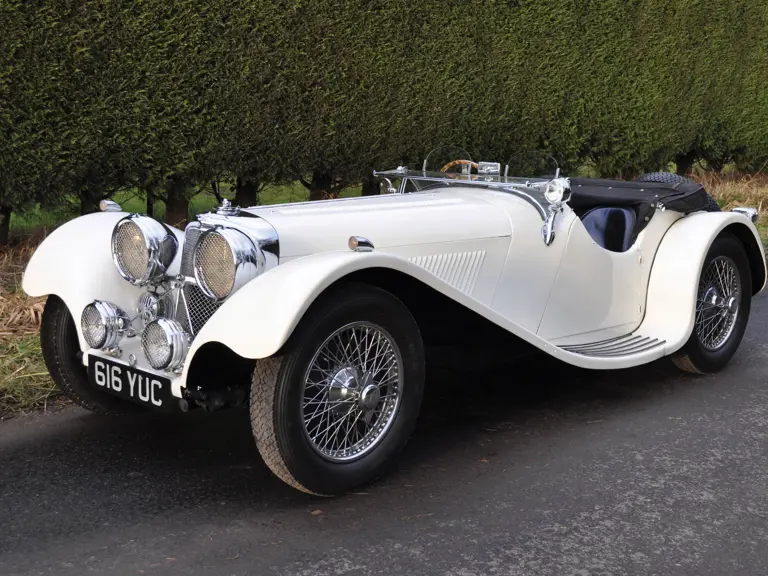

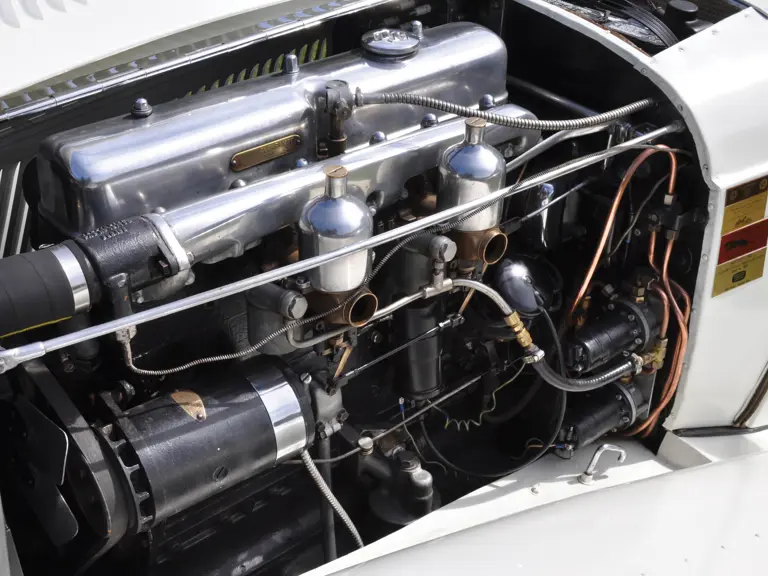

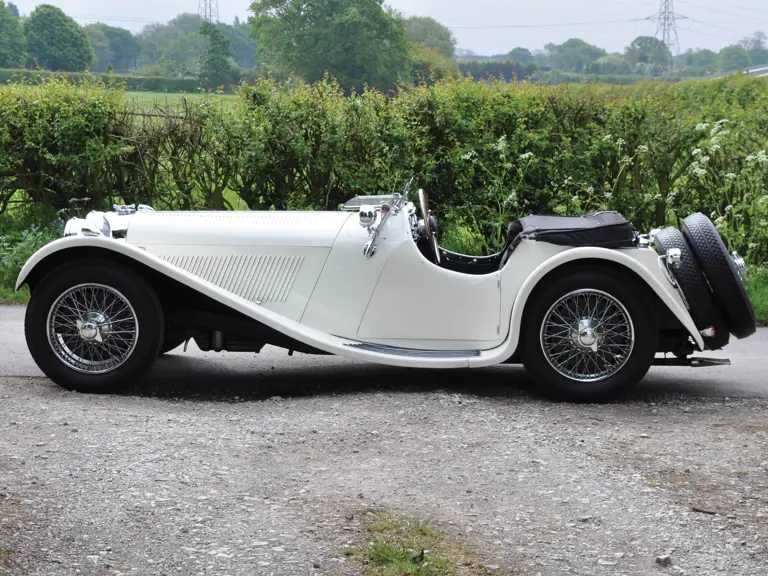


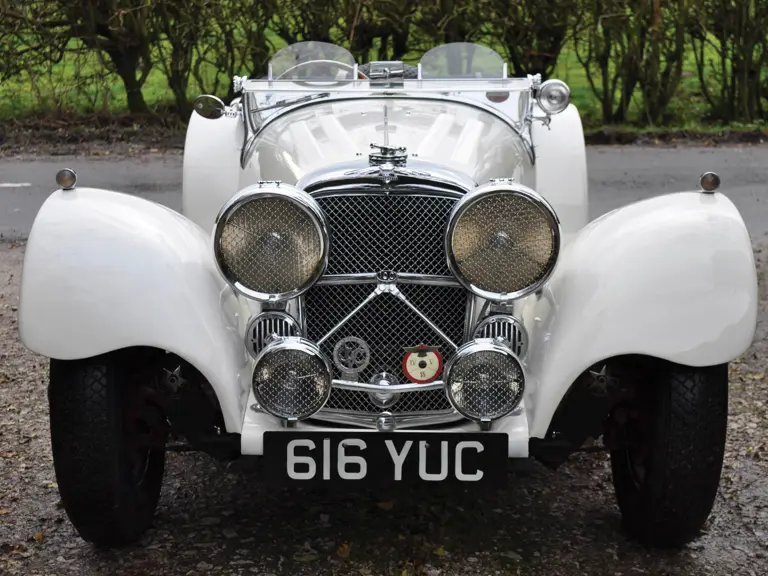
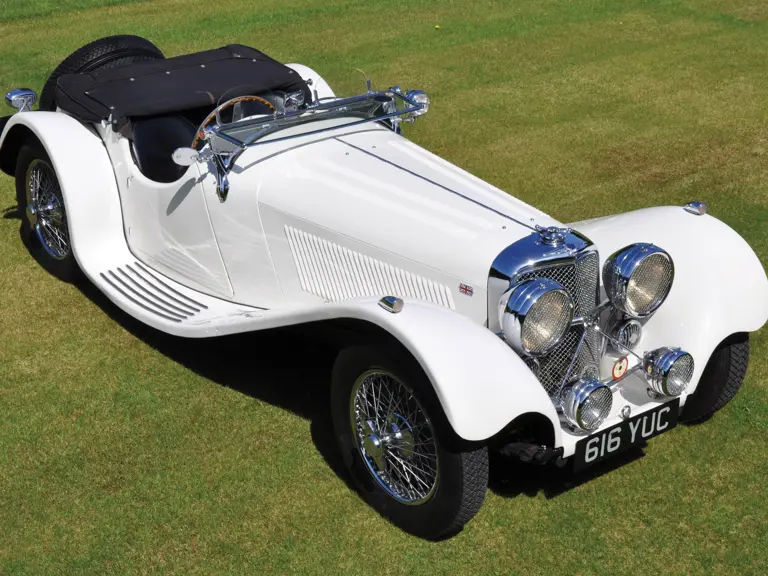
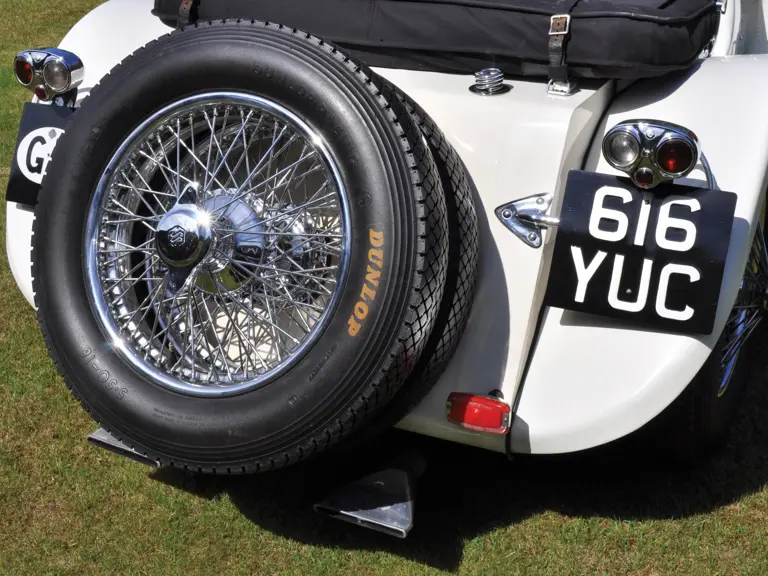


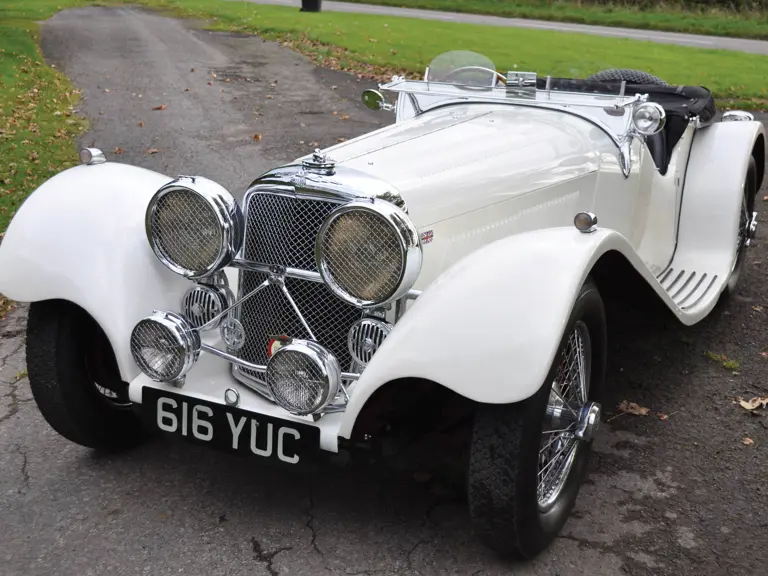
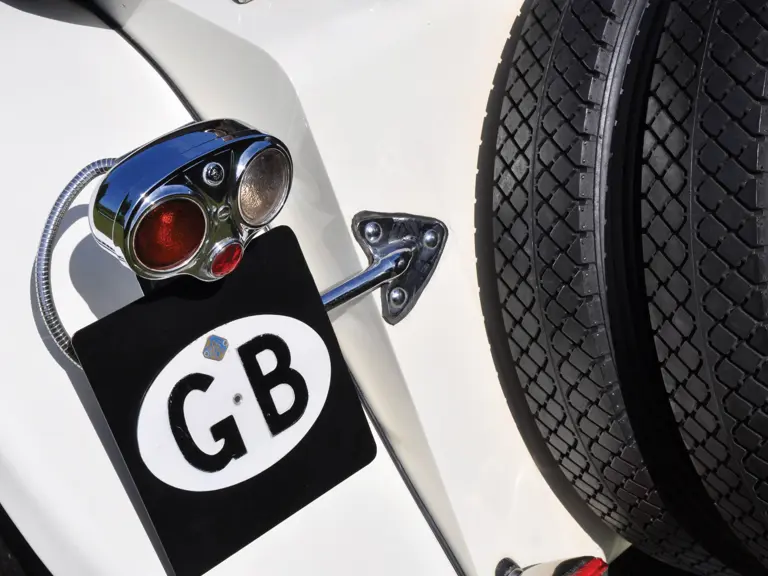
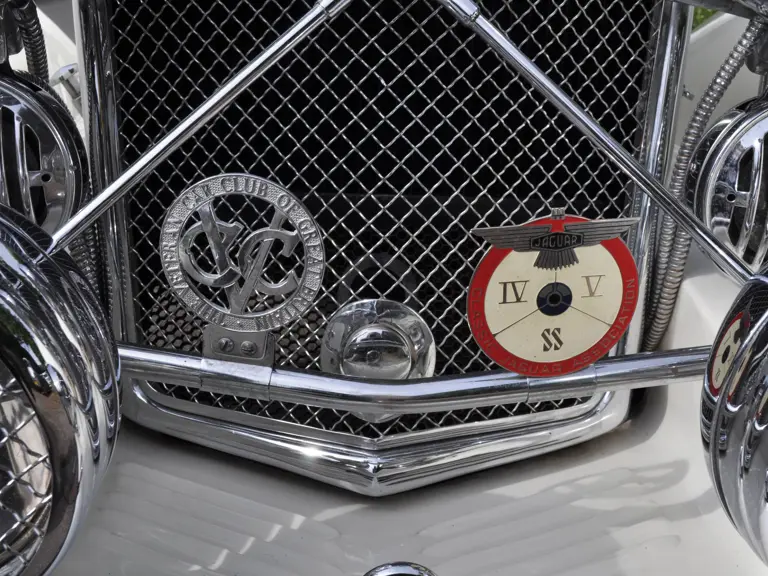
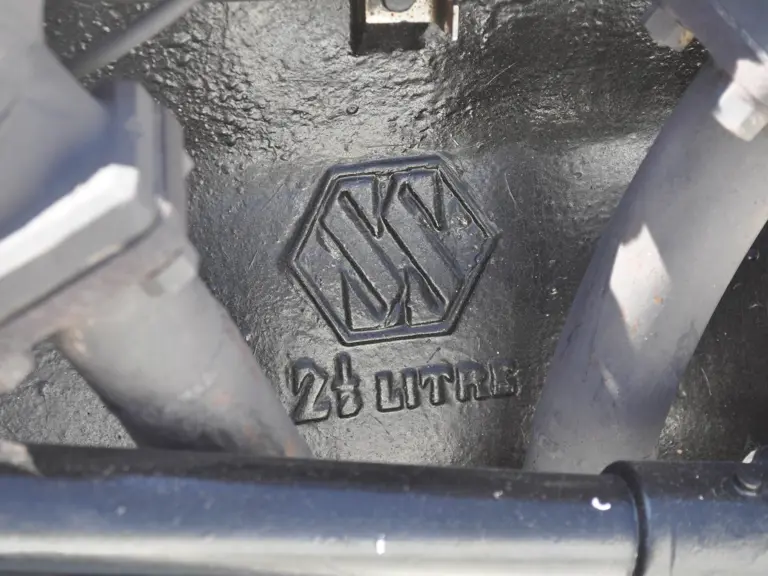

 | United Kingdom
| United Kingdom


